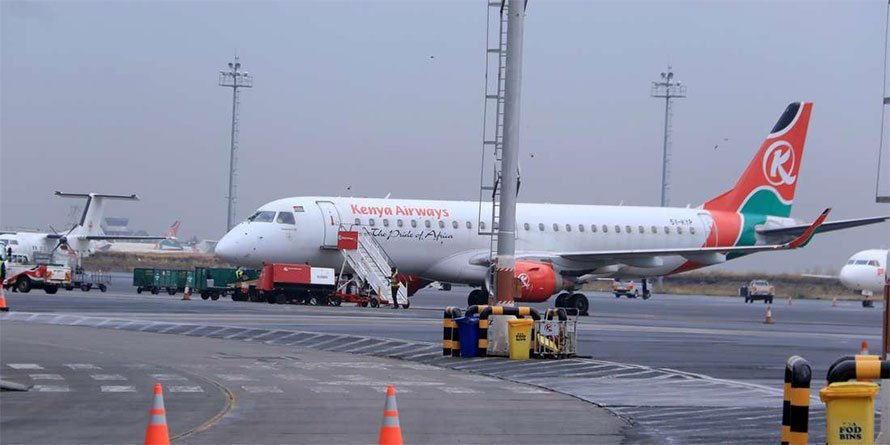A Kenya Airways aircraft at Jomo Kenyatta International Airport. FILE PHOTO | NMG Milton Friedman once posited that only a crisis, actual or perceived, produces real change.
When it occurs, actions that are taken depend on the ideas that are lying around. Talking about crisis, on Friday last week, Kenya Airways stock was suspended from trading at the Nairobi Securities Exchange (NSE) after nearly 24 years of listing.
The exchange stated that the company’s operational and corporate restructure and government buy-out was imminent following publication of the National Management Aviation Bill, 2020 on June 18, 2020. The State wants to take back full control of the national carrier by October 2020.
It was an idea born out of a crisis that was long brewed. I started covering the airline in 2011 as a junior sell-side equity analyst.
My first brush was the airline’s rights issue in 2012. Proceeds from the issue were earmarked to fund pre-delivery payments towards acquisition of nine Boeing 787 series (famously referred to as Dreamliners) as well as a number of Embraer-190 series.
It was an ambitious project that the company christened Project Mawingu. According to the firm’s presentation, it was a 10-year strategic plan which committed the airline to operate 91 routes by the end of the first five years, and 115 routes by the end of the 10 year period (2021).
The plan required additional 76 new aircraft by 2021, 34 widebody and 42 narrow-body. Consequently, the share of widebody aircrafts would rise to 41 percent from about a third. The total funding requirement stood at $3.65 billion.
It was audacious and well thought-out, in my view.
As an equity analyst covering Kenya Airways at the time, I marveled at the plan when it was presented to us as the analysts community.
For a company whose share price had lost over 80 percent of its value peak-to-trough at the time, I finally saw an upside.
In a mea culpa note, I gave a cautious BUY recommendation to clients. Cautious because I thought the $3.65 billion financing plan, 95 percent of which would come from debt, would shred KQ’s balance sheet, especially if the business risks to the project crystallised—the limiting JKIA infrastructure being one them (and is still). The balance sheet was indeed shredded.But most importantly, this project invited pilferage into the company; and stories have been written about this. To this day, I can say that a combination of adverse macroeconomic factors, […]
